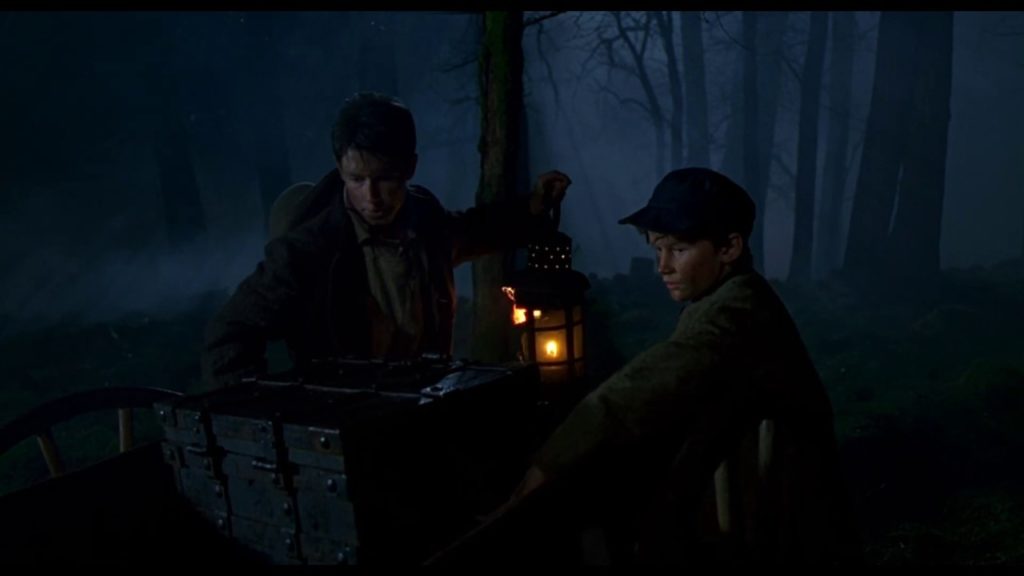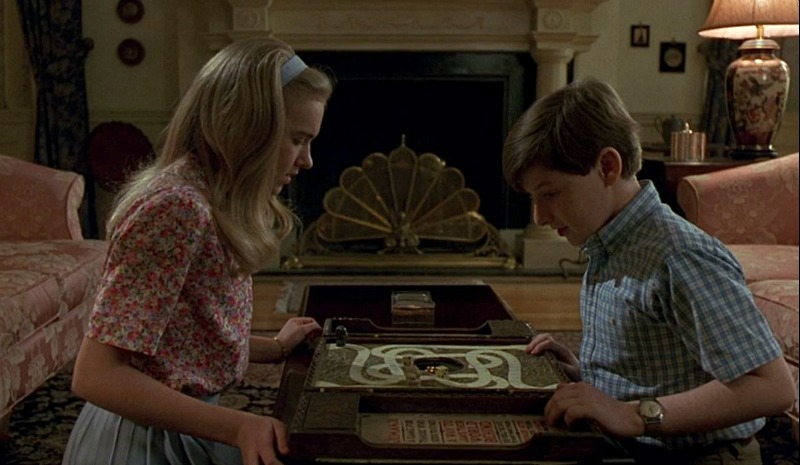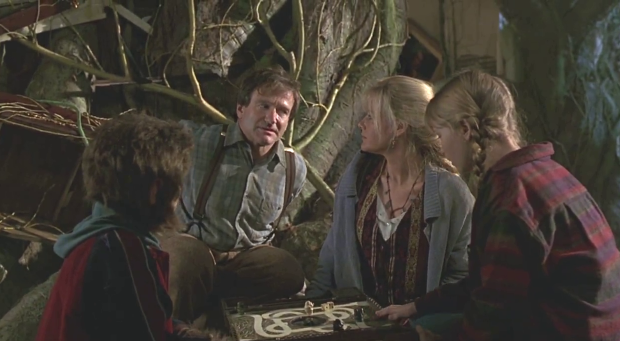Misconception of Slytherin House
Slytherin is painted negatively for the traits the members of this house embody. Although Slytherin students are ambitious, cunning, and determined, they are more.


Chris Van Allsburg wrote a picture book called Jumanji in 1982 portraying the fantasies of animals emerging into reality. The word “Jumanji” is an African word in Zulu and translates to “many effects.” The 1995 film adaptation depicts a light horror of a children’s fantasy jungle coming to life. The cursed game reaches out to children through the knocking of African drums, echoing like music from a scary movie. The sounds cause nervousness to immediately take over the children. The title “Jumanji” scatters like particles and comes back together, symbolizing that no prize can be won. To win is not to play the game.

The film reveals it is not all fun and games since these creatures come to life and the player can get sucked into the game for 26 years. Alan Parrish (Adam Hann-Byrd), a son of the wealthy CEO of Parrish Shoes, appears in the first scene of the film. Alan rides his bike and greets everyone when a group of neighborhood boys chase him to his father’s factory. It’s clear he had been bullied incessantly. He begs his father to bring him home. However, his father tells him: “If you are afraid of anything, you should stand and face it.” Later, it’s discovered that Alan is friends with one of the bully’s girlfriend, which results in them cruelly attacking him. The film does an excellent job setting the foundation of an important lesson: standing up for oneself leads to survival, as Alan is able to persevere in the jungle for 26 years.
The young characters fall victim because Alan wants to leave his home to escape bullying he’s facing. The game thinks Sarah Wettle (Laura Bundy) and Alan are both enrolled into its world. Once they play, Alan is trapped into the game, doomed to remain in the jungle until Peter rolls a pair of dice and lands on the numbers “5” and “8.”
Children are naturally curious and sounds alert them to investigate what they don’t understand. The drumming from the game is what alerted the children to search and find the game. The show points out that the minute they start to play, they are imprisoned. A strong example of this is occurs when the tokens are locked in place on the board and the children can’t move them.

Jumanji portrays the sadness of losing a parent after an argument. After Alan (Robin Williams) runs to find his parents, he learns they did everything they could to find him. Then, they lost everything and died, never able to find him. Sam Parrish loved his son: losing a child is a pain nobody cannot explain. The layout of this scene and seeing the stampede of animals convinced Alan to finish the game and get his life back.
One thing Jumanji teaches is when you start something, you better to finish it.
Alan, Peter and Judy (Kirsten Dunst) realizes another player needs to play to end the game. They go looking for Sarah (Bonnie Hunt), a friend of Alan’s. Once they start playing, they must continue. Van Pelt, a murderous hunter starts shooting after them as though they’re animals to be hunted. Alan became his prey for Van Pelt to chase in the cursed game. In one horrifying and surreal moment, Van fired shots at Alan that can kill him, but it’s also possible that no one can actually die in this world. These psychological gymnastics cause emotional distress and trauma. Van yells at Alan to face him like a man, a shocking demand since Alan was trapped for 26 years without any positive male models to teach him about what a “man” is. This moment also serves as a flashback to the time when he was bullied as a child and had to face his tormentors. The scene highlights that Alan is a child trapped in a grown man’s body. Another perspective worth exploring occurs when Alan yells at Peter (Bradley Shepherd) to grab the game out of the river. Since Peter couldn’t reach it, this moment acts as a parallel to Alan being criticized by his father and is a form of projection.
The real twist is that Van Pelt and Sam Parrish are played by the same actor to make it clear that both characters were an embodiment of his father in different settings.

Parrish’s residence symbolizes the merging of New Hampshire and African jungle. The animals eventually turn the town into their habitat. The “players” each take a turn to quickly finish the game, but Van Pelt finds them at the house once the last dice rolled. Alan utters “Jumanji” and everything reverts back to the present day when Sarah and Alan began the game. To the children’s relief, Jefferson Street returns to normal. When Alan sees his dad, he hugs him and tells him how he much missed him, representing a second chance at manhood and making amends. Alan and Sarah make the best of their situation, even though they miss Judy and Peter. Sarah and Alan toss the “Jumanji” game over the bridge and over the river, similar to the boys in the first scene who bury the game in order to cast away the trouble of the cursed game. In 1995, the children are able to reunite with Sarah and Alan outside of the cursed game and in their own world at a Christmas Party.
Disturbingly, the movie ends with Jumanji being unearthed on the beach, a final scene that haunts with the word “Jumanji.” The first scene repeats itself, representing a never-ending crisis. I’m lead to ask myself: what would finally have destroyed this traumatic game? Perhaps casting it into fire would have been a better judgment call, as water simply let it reemerge to torment another generation. Jumanji asks audiences to reflect deeply on patterns that never cease and to imagine what can finally end a cycle of pain.
Related lists created by the same author
Slytherin is painted negatively for the traits the members of this house embody. Although Slytherin students are ambitious, cunning, and determined, they are more.